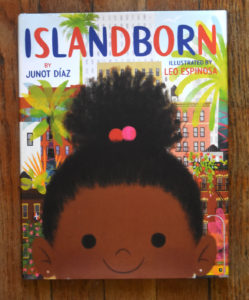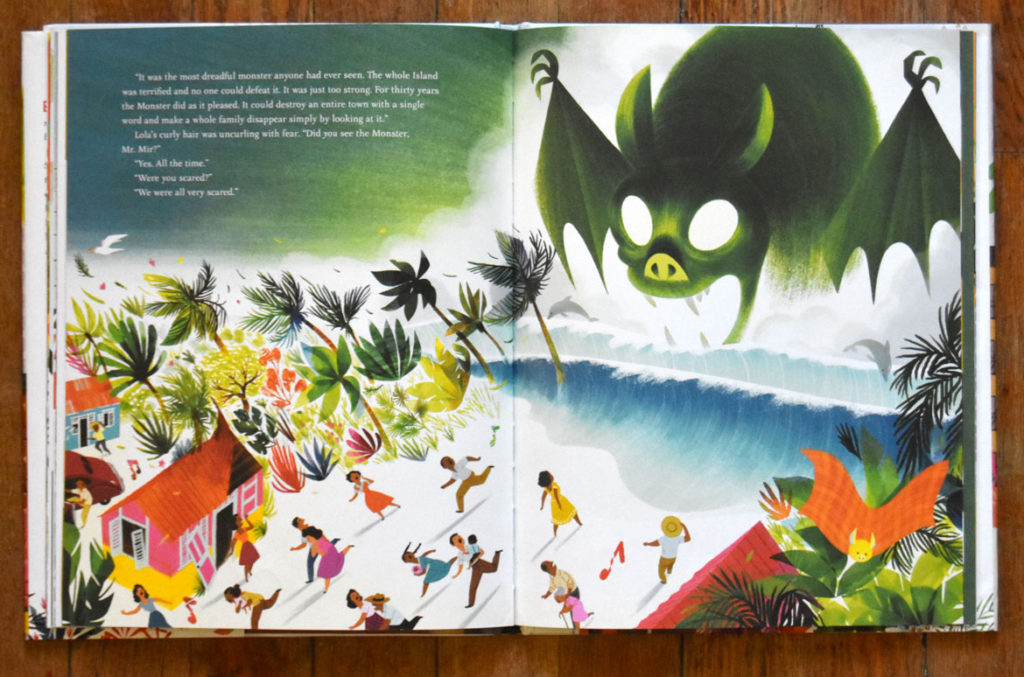Two decades ago, author Junot Diaz was asked by his two goddaughters, Dominican girls living in the Bronx, to write a book about little girls like them.

“The only problem is it took me 20 years to write it. So I am officially the slowest writer. But I also keep my promises,” Diaz said in introducing his new children’s picture book “Islandborn” during a talk at the Boston Public Library in Copley Square last Sunday.
“’Islandborn’ is about a small girl named Lola, who, like me, was born someplace else called the Island, who moved up north when she was just 1 and can’t remember anything about the island whatever,” he told the library audience.
Diaz himself grew up to be a MacArthur “Genius” Grant-winning professor of writing at Massachusetts Institute of Technology. His grownup novel “The Brief Wondrous Life Of Oscar Wao” won a Pulitzer Prize in 2008.
He was born in the Dominican Republic and moved to the United States with his family as a boy in 1974. They settled in an apartment Parlin, New Jersey, one of the first Dominican families in the area, surrounded by white neighbors who showered them with racist insults.

“I came to New Jersey and I only spoke Spanish. I found learning English incredibly hard. So hard that for the first two years I didn’t say a word of English,” Diaz told the library audience. “I learned to read English super-fast. … I used to think I liked to read because nobody could make fun of my accent.”
In “Islandborn,” Lola’s elementary school teacher asks all the students to draw pictures of “the country you are originally from.” Lola can’t recall her Island, so she asks neighbors and family members for their memories. They describe an enchanted paradise of bats and dancing, of sunsets along tropical beaches, of dolphins and whales, of coconut drinks and mangos so sweet that they’ll make you cry. But it’s also a place of oppressive heat and hurricanes, and home to a monster—depicted by the book’s illustrator Leo Espinosa as a giant spectral bat that arrives like a hurricane.
“The whole island was terrified and no one could defeat it,” the superintendent of the building where Lola lives reluctantly tells her. “It was just too strong. For 30 years the Monster did as it pleased. It could destroy an entire town with a single word and make a whole family disappear simply by looking at it.”
Growing up, Diaz found something strange in the way grownups talked about the Dominican Republic. And he reflects this in “Islandborn.” “I knew there was something missing in the story because they would start the story and suddenly they would stop,” he told the library audience. “Later on I found out the secret was this dictator, this monster.”

Help Wonderland keep producing our great coverage of local arts, cultures and activism by contributing to Wonderland on Patreon. And sign up for our free, weekly newsletter so that you don’t miss any of our reporting.
Who is the monster, one child asked. “In my school, there was always a bully. You can have a bully in a school and you can have a bully in an entire island,” Diaz said. “In a few years, the word dictator will be useful. For now, we’ll say super-bully.”
“Monsters love fear and they love it when you’re scared. I think this monster came out because people were too scared,” he said.
Is the monster like Trump, a child in the audience asked.
“Oh, no. Chaos. Sheer chaos,” Diaz joked—and sidestepped the question. “Young person, I feel like I’m going to see you at university.”
In the book, Diaz doesn’t more specifically identify his Monster—but on one page the building superintendent holds a photo of three women and a man under a sign reading Salcedo. It’s a reference to the Mirabal sisters from Salcedo—Patria, Minerva and Maria Teresa—who were active in the opposition to Dominican dictator Rafael Trujillo. They were assassinated in 1960 and became icons of the resistance.
“I think he’s like most authoritarian, near-totalitarian dictators,” Diaz recently told National Public Radio about Trujillo. “There was no safety for people or families. Today, you could be walking down the street, and somebody who had Trujillo’s ear would want your house, and the next thing you know, you would be out of it. There was constant murder, constant torture. This was also a racial dictatorship, a violently Jim Crow-type dictatorship where people of dark skin, their lives were made much more difficult than the light-skinned people.”
Diaz told NPR that immigration stories are often framed in terms of people coming to the United States for greater opportunities. “There’s also the fact a lot of people come because political realities have uprooted them, have driven them from their homes.”

“I wrote this book about one island and all islands,” Diaz told the library audience. “I wanted this book to be about the Dominican Republic I could have called it the Dominican Republic. But I wanted it to be about a lot more than that.”
In “Islandborn,” people finally band together to successfully overthrow the monster. At the reading, a child asked Diaz how the monster vanished.
“When you’re young, we call it friendship,” Diaz told the library crowd. “When you’re old we call that solidarity. Monsters don’t like friendship. And they certainly don’t like solidarity. This [book] is sort of a how-to guide.”
Help Wonderland keep producing our great coverage of local arts, cultures and activism by contributing to Wonderland on Patreon. And sign up for our free, weekly newsletter so that you don’t miss any of our reporting.
